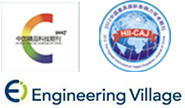Abstract:
Magnetic chitosan microsphere (MCM) is a new type of adsorption material, which has unique magnetic response characteristics and good adsorption performance. With its outstanding environmental protection and controllability, it has attracted high attention in many fields such as biomedicine, food engineering, sewage treatment and so on. MCM prepared by traditional methods has some problems, such as nanoparticles are easy to dissolve in acidic solution and narrow application range. Therefore, researchers have carried out a lot of work in its optimization and modification. In this paper, the research progress of optimizing MCM was reviewed in detail from two aspects: magnetic nanoparticles modification and chitosan modification, including modification and replacement of magnetic nanoparticles, chitosan molecular imprinting modification, grafting modification, metal chelation modification, alkylation modification and so on. The adsorption and removal effects of modified MCM on heavy metal ions in wastewater and ionic dyes in printing and dyeing waste were summarized. Finally, the problems and challenges faced by modified MCM were discussed. Its future development trend was prospected, and the methods and ideas to further improve the application efficiency of modified MCM were put forward.


 下载:
下载: